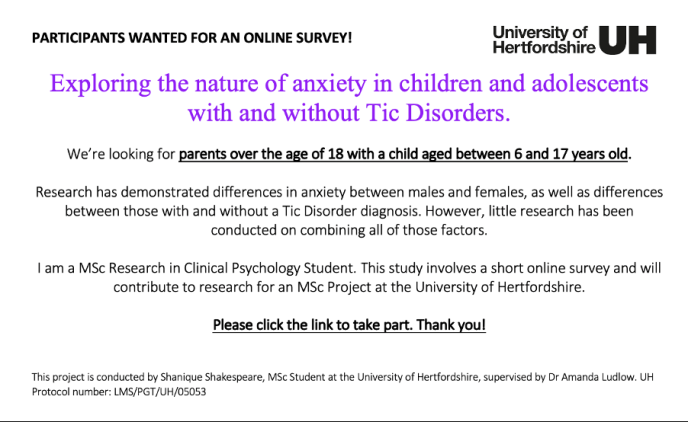Category menu

Exploring the nature of anxiety in children and adolescents with and without a Tic disorder
Posted on 6 July 2022 by Pippa McClounan
New research study from the University of Hertfordshire
Researchers at the University of Hertfordshire are exploring the gender differences within anxiety in children with and without Tic disorders, along with investigating repetitive and sensory behaviours. If you decide to take part, you will be asked to complete an anonymous 25-minute online survey. Please click on the following link for more information and to take part.
While it has been highlighted that tic expression can vary in frequency and intensity, the expression of tics can also be systematically affected by contextual factors, with anxiety being a common trigger. For example, anxiety symptoms or diagnoses have been associated with an increase in the severity and frequency of tics. Importantly, the stress and anxiety bought about by the Covid-19 pandemic has led to an increase in tics both those diagnosed with tics, but clinicians have reported increases in the case of sudden and new onset of severe tics and ‘tic-like’ attacks (Heyman et al., 2021).
The new surge of sudden motor and phonic tics appears to occur most frequently in females compared to the higher incidence of tic disorders commonly reported in males, with some speculation that differentiation in levels of anxiety experienced by adolescent females may make this group particularly vulnerable. However, few studies have addressed anxiety in children and adolescent with a tic disorder.
Therefore, the current study aims to explore levels and types of anxiety experienced by children and adolescents with and without tics disorders, assessing its relationship with sensory and repetitive behaviours.
Parents/carers will be requested to complete an anonymous survey.


